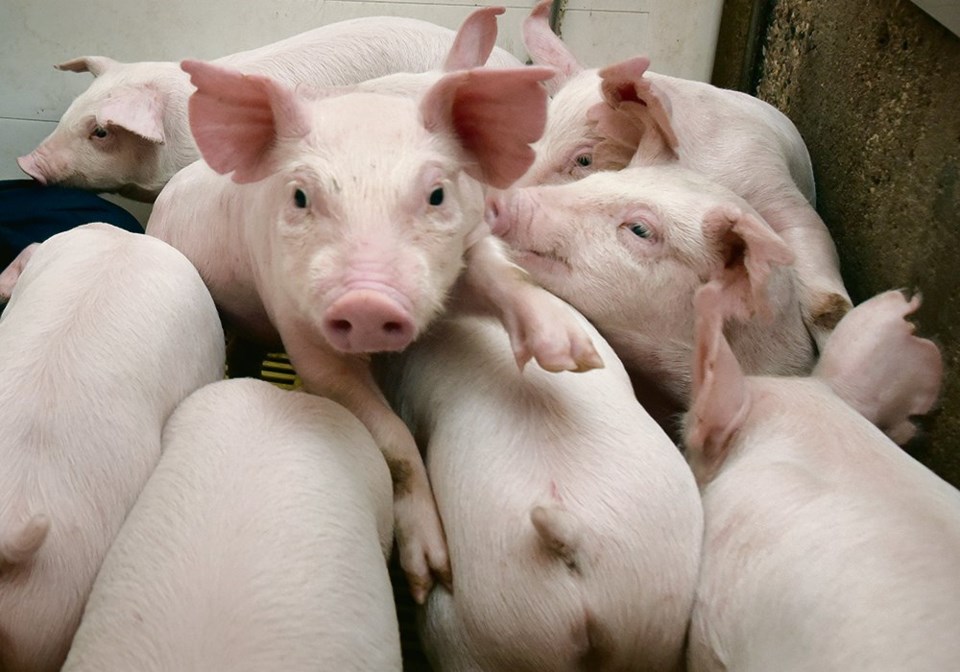This coronavirus causes porcine epidemic diarrhea, a severe disease in which pigs go off feed, vomit, have diarrhea and often die.
The virus is shed in large volumes in the feces and other pigs become infected when they ingest feces-contaminated materials.
PED was first detected in the United States in 2013 and subsequently in Ontario in 2014. The Canadian outbreaks were associated with spray-dried porcine plasma, a product that is added to feed to increase protein content. Molecular analyses identified China as the most likely source of the North American PED outbreak since strains found in North America were most similar to those recovered from the Asian country.
The role of contaminated feed materials has been heavily scrutinized in the wake of the PED outbreak. There are concerns that other viruses, such as those that cause African swine fever and foot-and-mouth disease could enter Canada through feed products.
Recognizing the risk of feed components is a game-changer in disease prevention. And it is a unique concept because the concern predominantly lies with non-animal origin/plant-based feed components. More traditional routes of entry that are heavily regulated include live animals and animal products such as undercooked meat.
It seems obvious that feeding animal products to other animals has the potential to spread disease. We all know how that went with BSE. But non-animal food products are a different story. These include grains (corn, soybean meal, distillers grains), amino acids, vitamins and minerals. Bulk feed ingredients are imported into North America as part of a global supply chain and then are incorporated into complete feed rations for pigs and other livestock.
To get into North America and reach susceptible animals, viruses hitchhiking on feed products have to survive a series of hurdles. First, the feed product has to be contaminated with virus. The virus has to remain active (viruses are generally susceptible to drying out, high heat and UV light exposure in addition to common disinfectants).
The shipping journey will take virus-contaminated product through a variety of heat and humidity variations in the 30 to 40 day journey across the globe from China. Then the virus has to survive various feed processing procedures and get shipped to a farm. Finally, a susceptible pig needs to ingest enough active virus to cause an infection.
While it seems like there is a low probability of this actually occurring, growing evidence supports that some viruses can overcome these challenges.
A 2014 study published in BMC Veterinary Research, led by Dr. Scott Dee, found that pigs fed contaminated feed material could develop PED (vomiting, diarrhea and typical microscopic changes in the intestines). This study was important because it proved the concept that contaminated feed was a potential source of virus to pigs that ate it.
Other laboratory-based investigations found that PED virus could survive in soybean meal at room temperature for more than a week and in feed samples, both wet and dry, for more than four weeks. One study examined how much PED virus is needed to cause infection, concluding that one gram of virus-laden feces could contaminate an incredible 450 tonnes of feed.
Researchers have also simulated the arduous trans-Pacific shipment to see how PED and other critically important viruses such as African swine fever virus and the FMD virus might survive in various feed components.
The studies have found that all three virus types survive well in several components such as soybean meal and vitamins.
An important missing link in this story is exactly how these plant-based feed ingredients get contaminated at the site of origin. Further studies are needed to better understand how feed ingredients are produced, stored and shipped to better understand potential sites of contamination and mitigate the risk.
Despite this uncertainty, the Canadian Food Inspection Agency has instituted stringent importation requirements for plant-based feed components to reduce the risk of foreign virus introduction. Feed material is now quarantined for specific time intervals and at certain temperatures to allow time for viruses to die before being distributed to feedmills for incorporation into rations.
It is unfortunate that it took the introduction of PED into North America to recognize the potential risk of imported feed components. But now that we know the risks, we can apply this knowledge to safeguard the swine and other livestock industries in Canada from other big, bad diseases we want to keep out of our borders such as FMD.
Dr. Jamie Rothenburger, DVM, MVetSc, PhD, DACVP, is a veterinarian who practices pathology and is an assistant professor at the University of Calgary’s Faculty of Veterinary Medicine. Twitter: @JRothenburger

